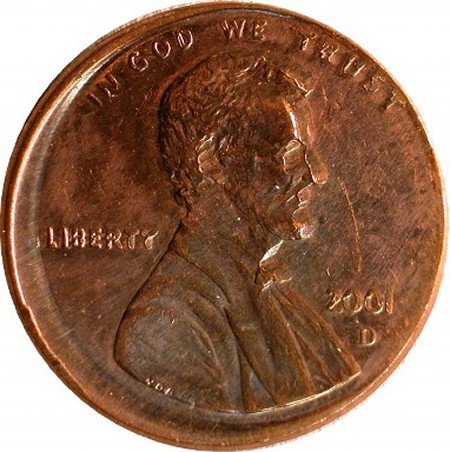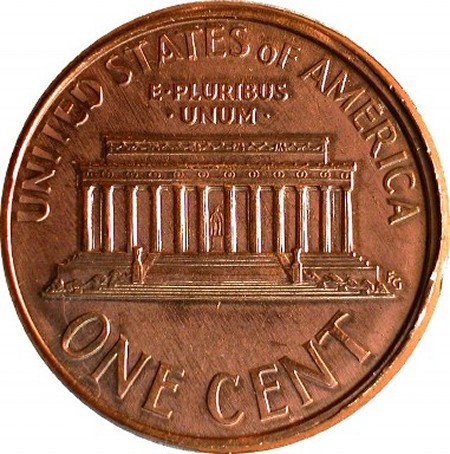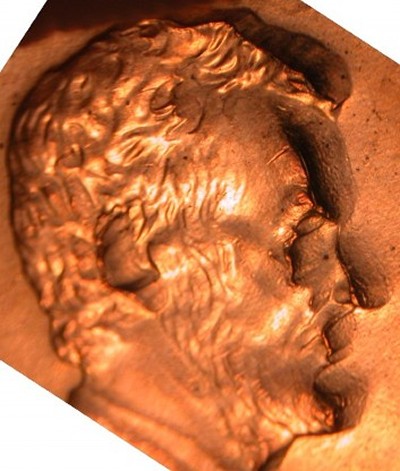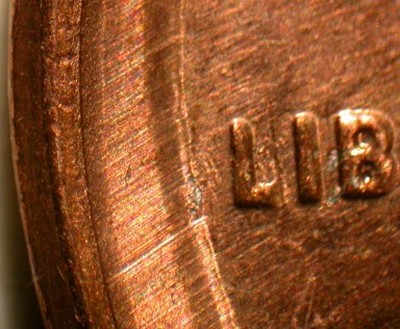PART VI. Striking Errors:
Design Ablation Error:
On First Strike
Definition: The die-struck design on the surface of a coin is scraped off by lateral (horizontal) die movement.


This 2001-D Lincoln cent exhibits a design ablation error on the first strike. The hammer die made initial contact with the planchet in a centered position but settled in a misaligned position. During its lateral shift toward the northeast, the hammer die continued its descent through the body of the coin. The completion of the downstroke amounted to no more than a fraction of a millimeter of vertical distance. The combination of movements (vertical and horizontal) left a crescentic “zone of ablation” on the left side of the coin. All design elements that were generated by the initial, centered impact of the hammer die were completely scraped off. The zone of ablation is filled with fine parallel striations and shows a very gentle downward slope that begins at the original design rim.
After reaching the lowest point of its downstroke, the hammer die lurched toward the southwest, dragging itself through the newly-struck design. This left the design grotesquely distorted. This form of distortion is classified as a form of machine doubling known as slide doubling. Design ablation errors that occur on the first strike are usually associated with severe slide doubling.
Design ablation errors on the first strike are usually misidentified as simple misaligned die errors.

